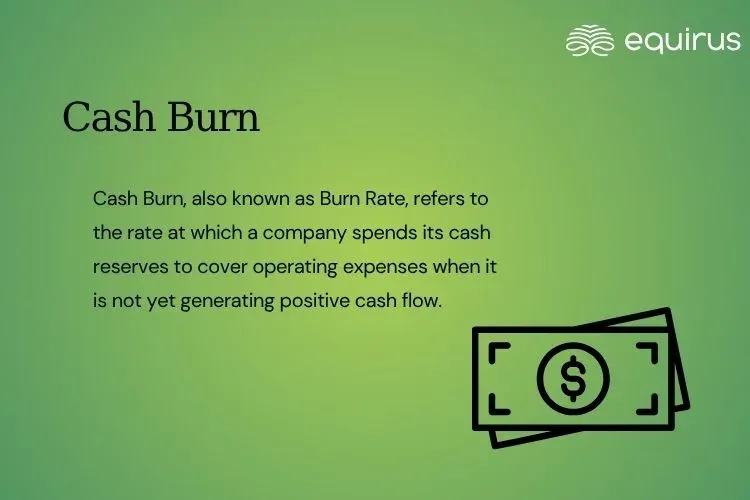Cash Burn

Key Highlights
-
Cash Burn, also known as Burn Rate, refers to the rate at which a company spends its cash reserves to cover operating expenses when it is not yet generating positive cash flow.
-
Types of cash burn includes gross and net burn.
What is Cash Burn?
Cash Burn, also known as Burn Rate, refers to the rate at which a company spends its cash reserves to cover operating expenses when it is not yet generating positive cash flow. It is a crucial metric for startups and early-stage companies that rely on external funding to run their business.
Types of Cash Burn
1. Gross Burn: The total amount of monthly operating expenses, including salaries, rent, marketing, etc.
Example: If a startup spends ₹10 lakh per month on all expenses, its gross burn rate is ₹10 lakh.
2. Net Burn: The actual reduction in cash after subtracting revenues from expenses.
Formula: Net Burn = Cash Outflows – Cash Inflows
Example: If monthly expenses are ₹10 lakh and revenue is ₹3 lakh, net burn = ₹7 lakh/month.
Why Cash Burn Matters?
-
Tracks Financial Health: Shows how quickly a company is depleting its cash.
-
Estimates Runway: Helps investors and founders calculate how long the company can survive without new funding.
-
Monitors Sustainability: Encourages smarter budgeting and cost control.
Cash Runway Formula
To find out how long a company can keep operating:
Cash Runway = Cash Reserves ÷ Net Burn Rate
Example:
If a startup has ₹70 lakh in the bank and a net burn of ₹7 lakh/month:
Runway = 70 ÷ 7 = 10 months
Use in Fundraising
Cash burn is a key metric investors evaluate before funding. A high burn rate with no clear path to revenue can raise red flags. On the other hand, a controlled burn with a good growth plan shows discipline and planning.
Indian Context
Startups in India, especially in sectors like edtech, fintech, and e-commerce, often have high burn rates in the initial years. News reports regularly highlight companies “burning cash” to gain market share through discounts, advertising, and expansion.
